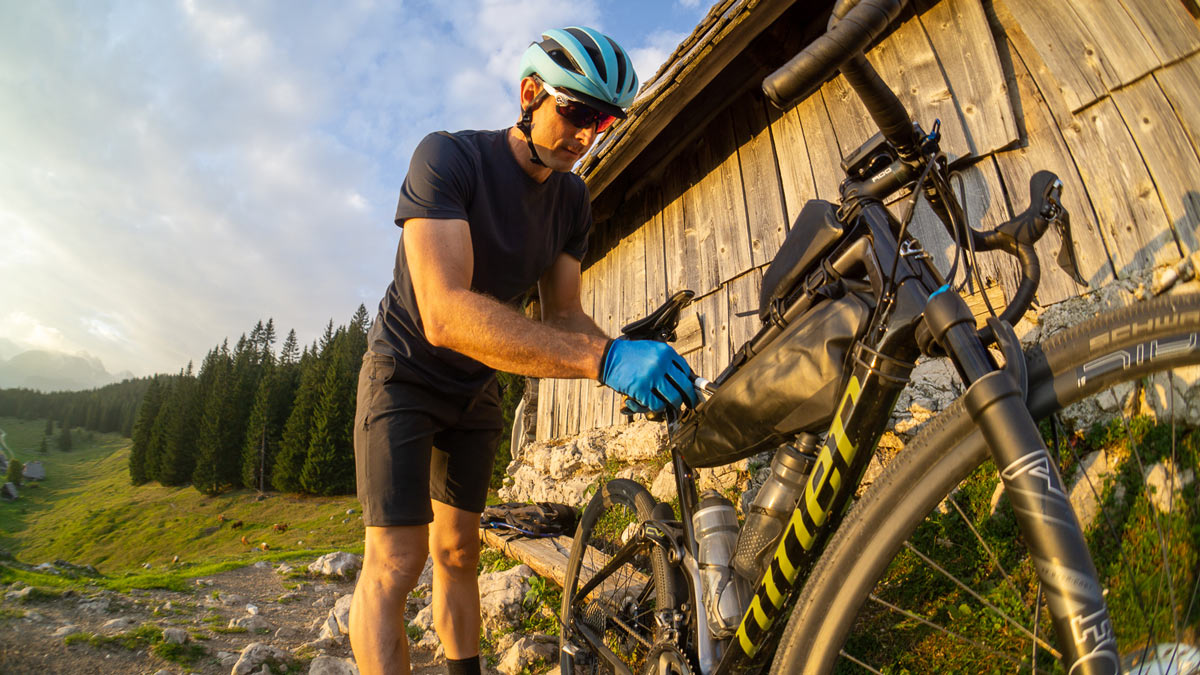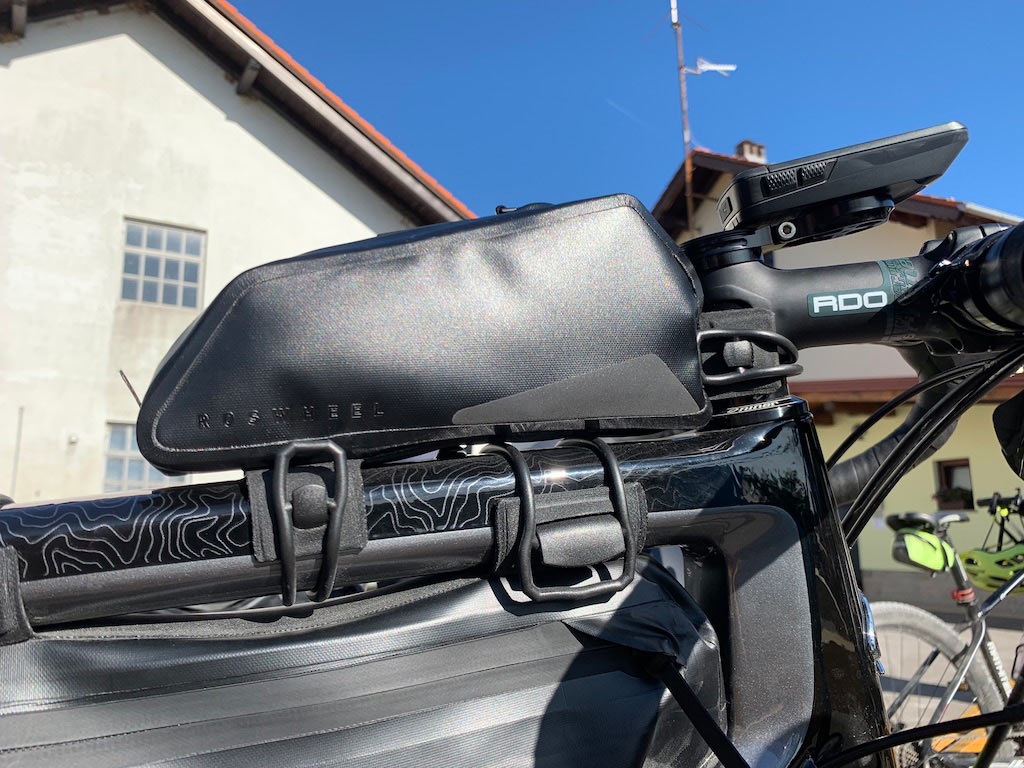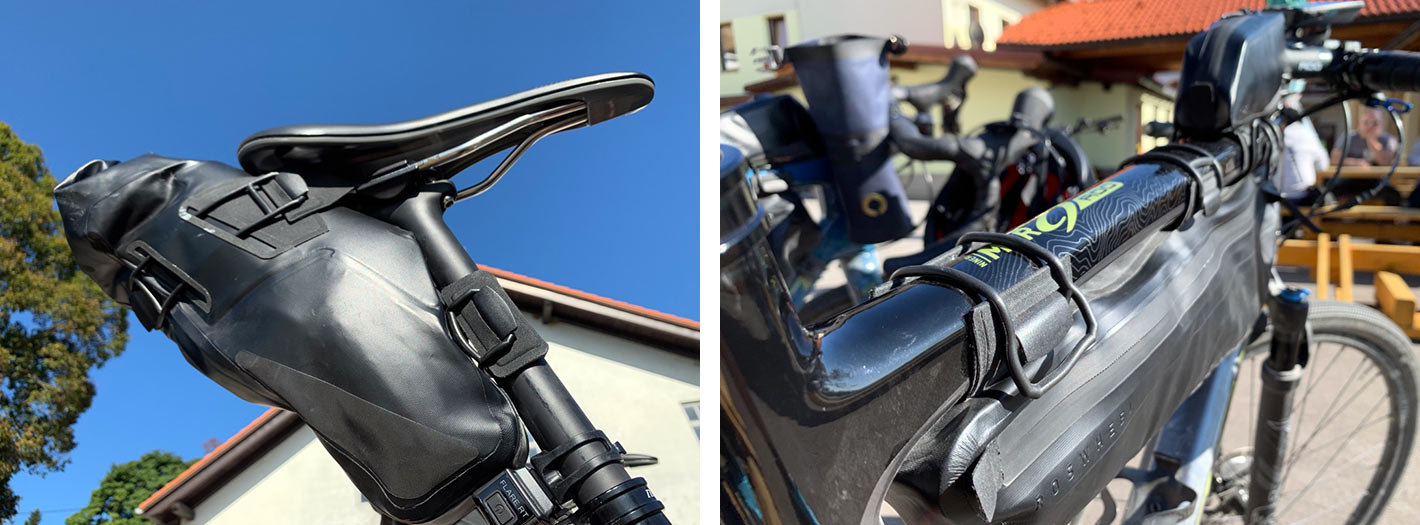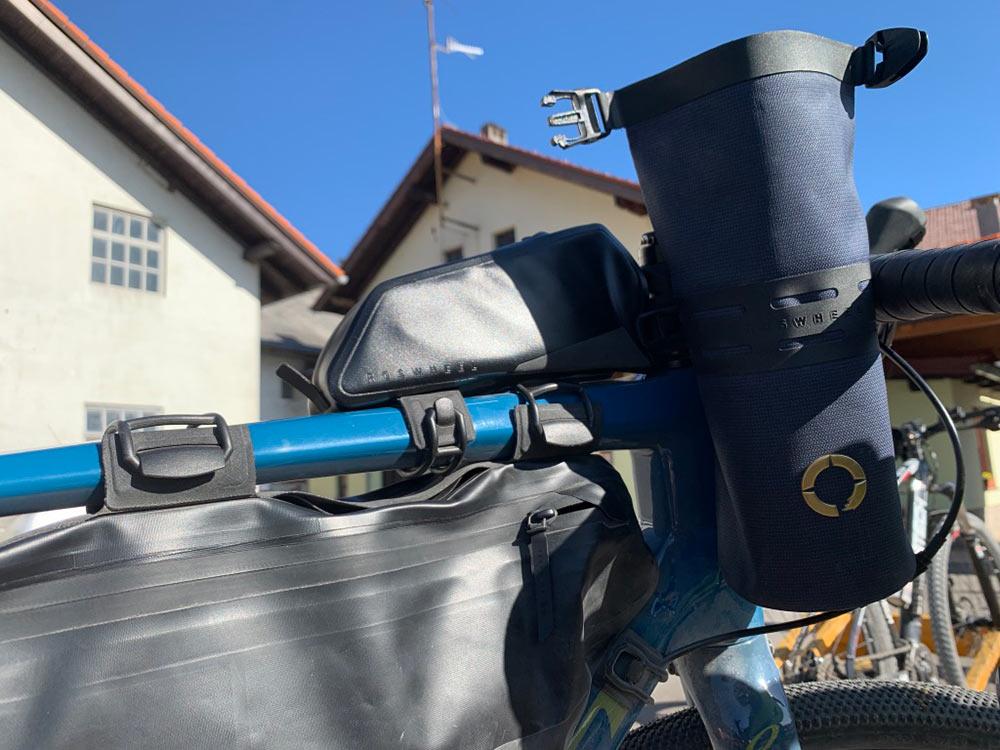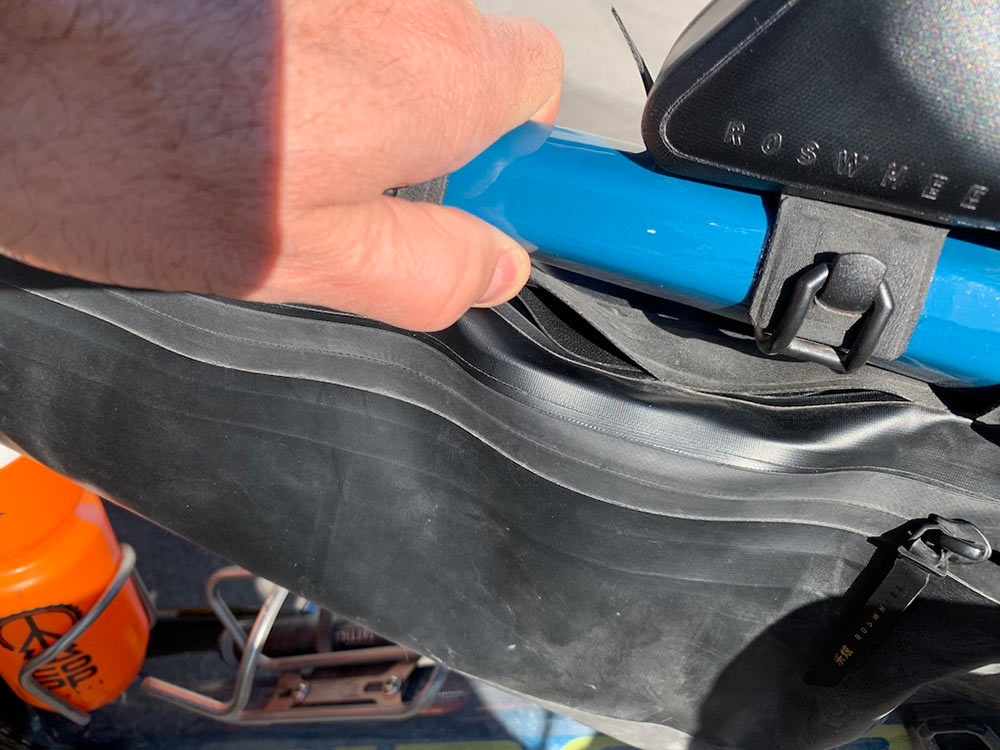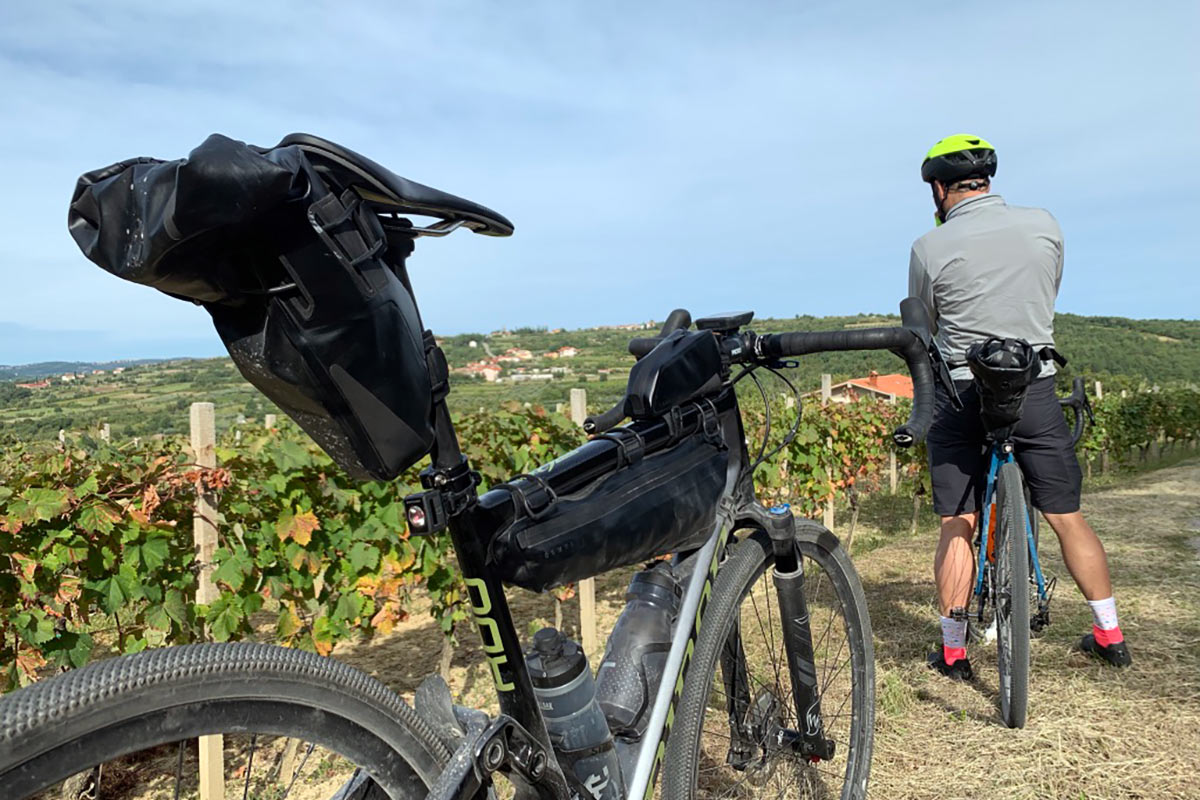It’s amazing it took as long as it did for bike bags to find their way on our bikes (and into our hearts). Over the last 10 years, bags have grown from niche to a large market segment. A fairly new player in this market is Roswheel bags, who made their formal U.S. debut at Sea Otter Classic with an impressive collection for all types of bicycles. As we planned our Slovenia gravel bikepacking trip, we looked to them for a versatile, easy-to-fit solution for carrying our goods. Here’s how it worked out…
Wait, who’s Roswheel?
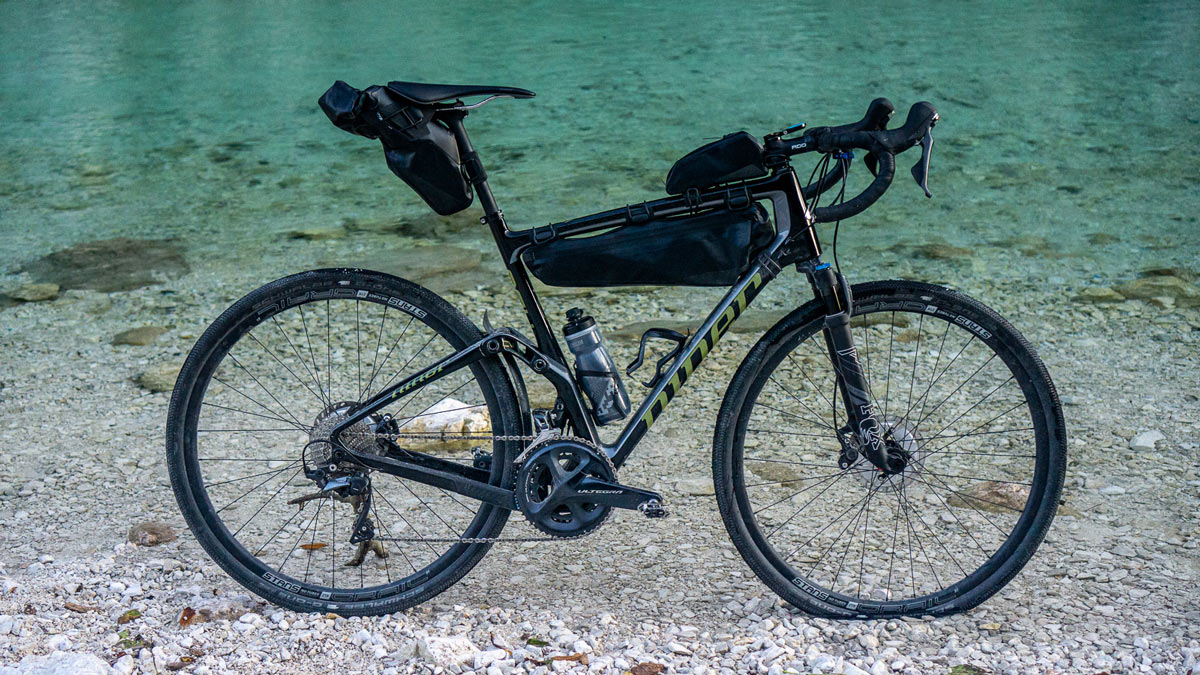
Based in China, Roswheel has been making all manner of cycling bags since 2007, but mostly for private label customers. In 2017, they relaunched as a standalone brand to show off their manufacturing chops. They opened a UK office to recruit design talent (including folks who’ve worked on Rapha gear). Two years later, they’ve introduced three complete (and completely new) series of frame bags: Road, Mountain and Touring. We used their Road Series on the Niner MCR and RLT to haul gear and snacks through the mountains.
Roswheel’s Road Series frame bag features
Roswheel’s Road Series bags are constructed of TPU-coated nylon, welded together to avoid seams. Zippers are rubberized, keeping water from soaking through the bags and into the load. Large reflective panels hide away on the murdered-out black, rubberized bags, keeping you seen when you need it most.
Velcro can snag on lycra, damaging an expensive kit. Instead, Roswheel straps their Road Series bags to the bike using proprietary lightweight rubber bands that snaps bags around the bike. The potential downside is if you lose or break a band, you’ll need another. Roswheel clearly gets this; they ship all Road Series bags with an assortment of ‘Fast-Fix’ rubber bands that come in a variety of sizes to fit a variety of tube diameters. They seem strong, too, and don’t slip. We never had any issues with ours throughout the test.
Roswheel bags actual weights
Left to right, the Road Series bags with attachment straps weighed in at:
- Seat pack – 600g
- Frame bag – 350g (size Large)
- Top tube bag – 180g (size Large)
- Handlebar roll – 460g
- Accessory pouch – 240g
For our rides in Slovenia, we only used the seat pack, frame bag and bento box. The accessory pouch attaches to the handlebar roll, both of which would have come in handy had we needed to pack more layers or planned on carrying everything we needed with us on the bike (we ended up with a support vehicle, though, allowing us to travel lighter).
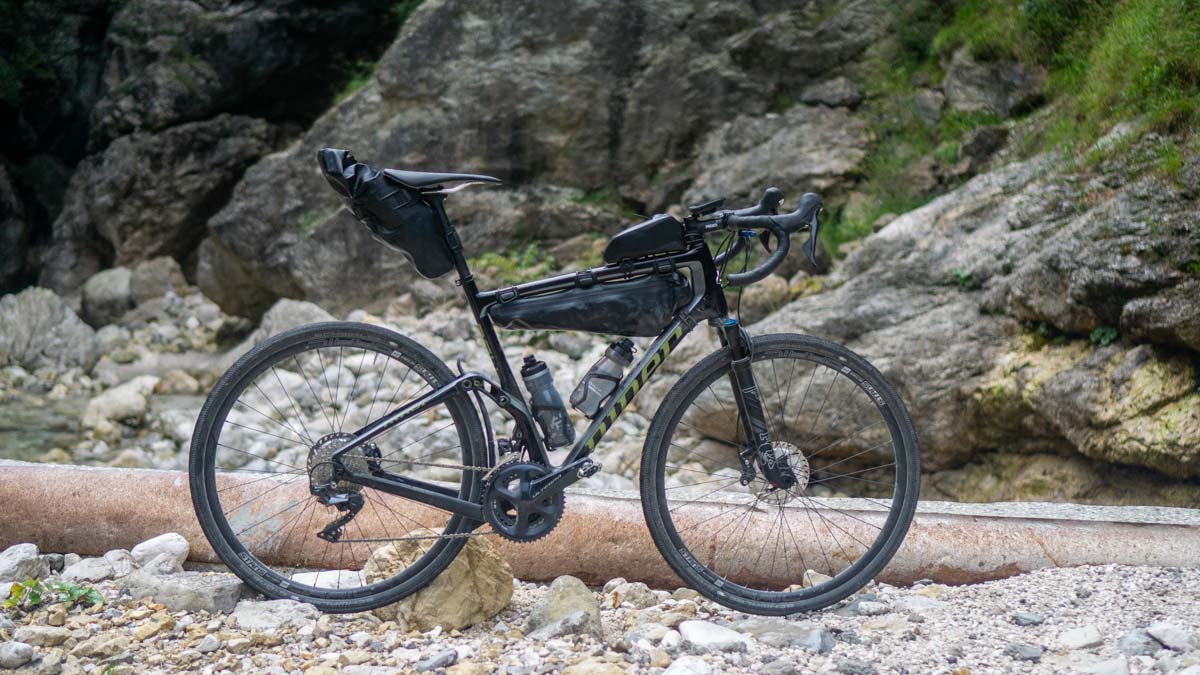
The entire Road series is available in a saddle bag ($46), seat pack ($119), frame bag ($77-$80), top tube “bento box” bag ($43), handle bar bag ($93), and an accessory bag ($46) that straps over the handlebar bag. Frame bags are available in small, medium, and large allowing you to dial in a neat custom fit to your frame.
The roll top style of the Sea Pack has a clever hidden ventilation strip, allowing air to push out of the bag so your load is always tight and clean. The clips that close it can snap under a welded loop, giving it a sleek, aero shape when done properly…which warrants this confession: We didn’t always close it properly. Which is why the tail looks a little saggy in some photos. It didn’t have to be this way, we just didn’t read the instructions until half way through our trip. Done properly, the Seat Pack sits high and tight.
Steve also used the Off-Road Bottle Pouch, which comes in a dark blue Duraflex material with roll top closure. Most days, he kept his Sony A6000 in there for quick photo ops.
Roswheel’s Road Series frame bag features
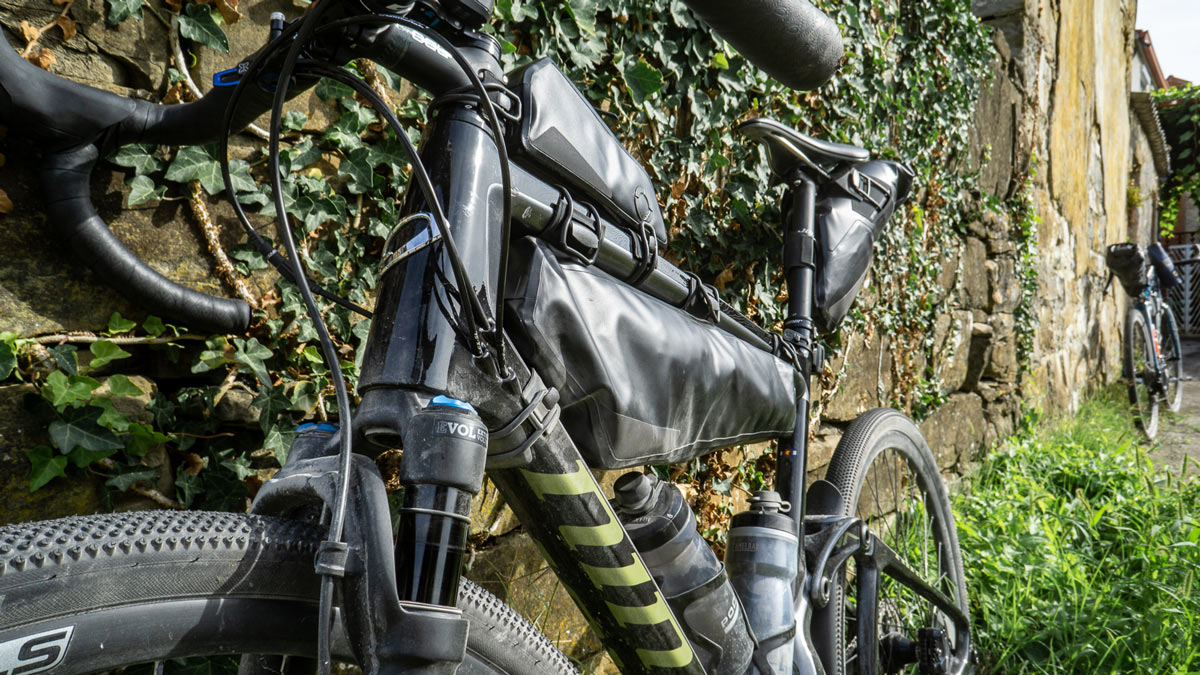
So how did the Road Series do? The black bags look sick. They are lightweight, waterproof, and discreet. The bands were a little finicky and can require some muscle to fasten; once strapped to the bike, you sorta wanna to leave them there. This was especially true when we lashed them to a bike with fatter, oversized tubes (like 3T’s Exploro).
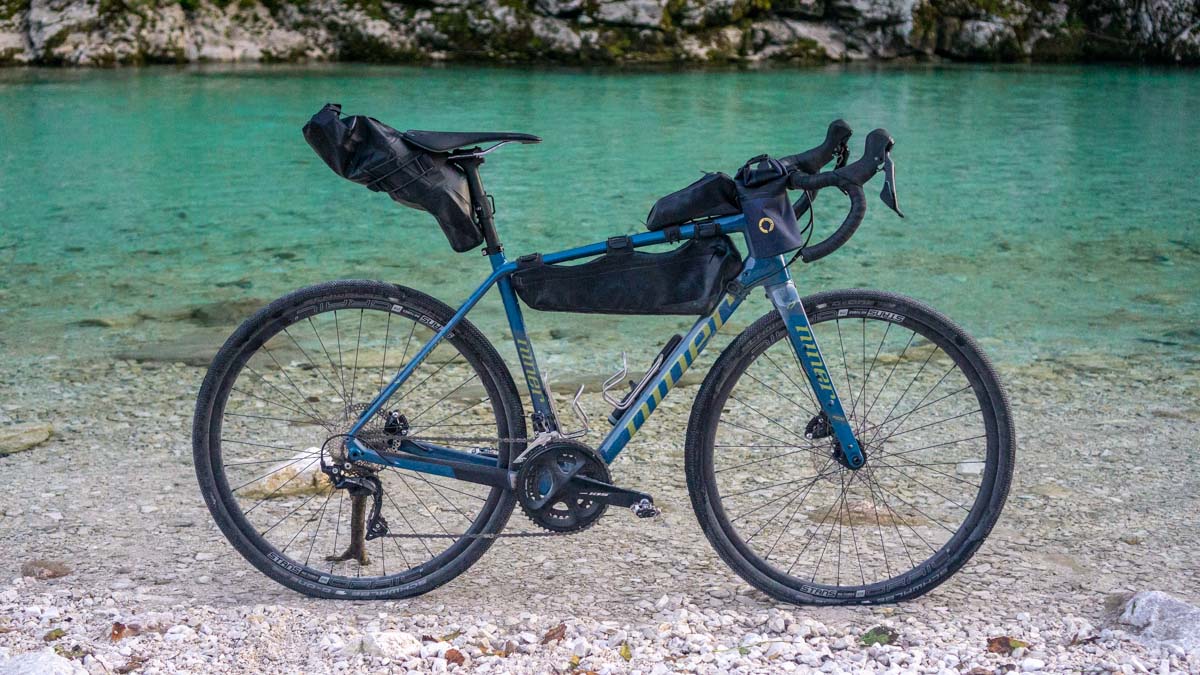
Getting the right fitting bag requires you to measure the bike’s frame. Steve originally ordered a size medium bag specced for a steel frame, but ended up riding a carbon frame with a slightly smaller triangle geometry. So the bag felt (and looked) a little squished. Lesson: Measure twice, order once.
He also experienced some delamination of the bag’s top strip from the bag proper (the bands tuck under it to hold the bag to the top tube), but to be fair these were pre-production samples. It never came totally off or put the bag in danger of falling off, and Roswheel has made some material and construction changes since these arrived. Barring any dramatic changes, if something like this did happen on the road, they could be sewn back into place.
We both loved the top tube bag, which is large enough to keep a GoPro and snacks. And the zipper pulls open and closed with a single hand, which helped it earn a spot on Tyler’s Editor’s Choice list.
Bottom line: Roswheel’s simple design is aesthetic, aerodynamic, and lightweight, making it the ideal bag for road junkies binging on miles.
